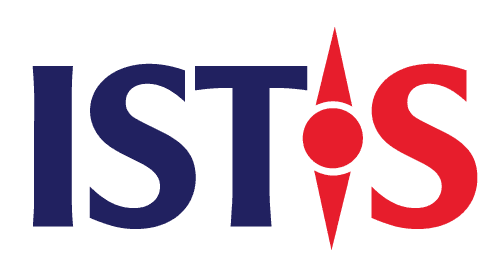Seed Funding as Strategic Momentum
Seed funding is often framed as a lifeline to “keep the lights on,” but for innovation-driven startups, it plays a far more strategic role. It’s not merely the first check—it’s the first signal. The partners you bring in during this phase often influence your product direction, hiring decisions, and even how future investors perceive you. In that sense, seed capital isn’t just money—it’s momentum.
The narrative that founders craft at the seed stage can have compounding effects. Seed investors don’t just evaluate ideas; they assess potential energy—how clearly a team understands the problem they’re solving and how convincingly they can turn early traction into long-term leverage. An oversimplified MVP or a generic “disruptor” pitch rarely excites experienced investors. What does? A founder who shows not just what they’re building, but why now is the time—and why they’re the right ones to do it.
Moreover, the structure and intention behind your seed round can shape your startup’s culture. Are you raising to chase growth or to iterate deeply on your core insight? Are you accepting capital from people who will challenge your thinking or just agree to your roadmap? Smart seed fundraising aligns resources with purpose—and for startups solving tough problems, that alignment can be the most valuable currency of all.
Looking for the Right Seed Investors
At the seed stage, it’s tempting to chase valuation or secure capital from whoever says yes first. But founders who think long-term tend to ask a deeper question: What kind of partner am I bringing onto the cap table? The right seed investor isn’t always the one offering the most money — it’s the one who aligns with your ambition, understands your market, and brings high-trust support when everything is still uncertain.
Some founders prefer mission-aligned funds, especially in sectors like climate tech or deep tech, where investor conviction matters as much as market potential. Others benefit from operators-turned-investors, who understand what it means to build from zero and can offer tactical input on hiring, pricing, or GTM. Seed-stage investing is still heavily relationship-driven — your early backers are likely to be your loudest champions, your sounding board, and sometimes your crisis support.
What many founders miss is that seed investors also have reputations. Future investors look at your early cap table not just for names, but for signal. Is this someone who’s known for helping their companies raise follow-on rounds? Do they tend to get pro-rata or help with introductions? Asking these questions — and talking to other founders in their portfolio — helps ensure that you’re not just closing a round, but setting the stage for your startup’s long-term resilience.
In short, choosing seed investors isn’t about filtering for capital; it’s about curating conviction. And in a world where capital is increasingly commoditized, the right conviction can be your rarest asset.
Timing Your Raise
There’s no fixed revenue number or user count that universally signals readiness for seed funding. Instead, what matters more is whether you’ve built enough proof to validate your core assumptions — and enough momentum to make the case that now is the right time to fuel the next phase.
That proof varies by business model. For SaaS, it might be a handful of paying customers and a strong retention signal. For marketplaces, it could be supply-side engagement or a clear wedge. For deep tech or hardware, it might be a grant-backed prototype or early industry validation. What investors look for is less about metrics in isolation, and more about how they fit into the narrative: Why this team, why this market, and why now?
Timing is also about strategy. Some founders choose to raise when they’re not desperate — when they still have six months of runway and can afford to be selective. Others align their raise with key milestones: a product launch, a successful pilot, or even press coverage. These moments create inflection points that not only boost confidence but generate FOMO — and that can change investor psychology significantly.
One underrated factor is signaling. Who you raise from, how you present your progress, and even when you announce your round all send signals to the market. Smart founders think about this intentionally — not to manipulate perception, but to shape momentum.
In a crowded funding landscape, the ability to craft a clear, credible, and compelling why now matters as much as the underlying business. Seed funding, after all, isn’t about proving you’ve built something massive — it’s about proving you’ve found something worth betting on.
Crafting Your Investment Narrative
A strong seed round isn’t just closed with numbers — it’s won with a story. Not fiction, but narrative. The best founders know how to structure their startup’s journey into a compelling arc that investors can follow, believe in, and champion.
That story doesn’t begin with the product. It begins with insight — a sharp understanding of a real, urgent problem in a market that matters. From there, everything else should unfold logically: why this problem matters now, why your approach is differentiated, how your solution fits into the bigger picture, and what progress so far validates your potential.
Your pitch deck is just one tool in this process. More important is your ability to own the room, to communicate conviction without arrogance, clarity without overconfidence. Investors aren’t just betting on your idea; they’re betting on your ability to navigate ambiguity and tell the story of your company repeatedly, to customers, to future hires, to future investors.
Many founders under-prepare on this front. They build a product, gather some metrics, and assume they’ll “just explain it.” But investors are constantly hearing pitches. The difference often lies in how memorable, how believable, and how strategically framed your narrative is. Are you painting a picture of a $100M company — or just showing off features?
And it’s not all about hype. Investors appreciate realism. Being open about your risks, your assumptions, and your next challenges doesn’t hurt you — it builds trust. The best seed rounds are not driven by over-optimism, but by alignment. Founders who can articulate their vision and their gaps tend to find investors who become true partners, not just checks.
In short: seed rounds are closed with strategy, not just slides. Your story is your strongest asset. Make it coherent. Make it honest. And most importantly — make it yours.
Long-Term Thinking at the Seed Stage: Building for the Round After This One
Seed funding is often seen as the beginning — but seasoned founders know it’s also about setting the tone for everything that comes next. A well-structured seed round isn’t just about hitting short-term milestones; it’s about building a foundation that future investors will respect, scrutinize, and eventually amplify.
This means being intentional about who joins your cap table. Strategic angels, domain-expert VCs, or operators with startup scars — these early backers often shape your company culture and credibility. Having the right names early on can influence who takes your next call at Series A, and how you’re perceived within the ecosystem.
It also means thinking about how you spend the capital. Burning too fast without meaningful traction raises red flags. Conversely, being overly cautious might signal a lack of ambition. The sweet spot lies in milestone-based planning: what are the 2–3 things you need to prove to unlock the next round? Whether that’s product-market fit, user growth, revenue, or team expansion, these should anchor your roadmap.
Founders who take a long-term view also build reporting habits early — clean metrics, data dashboards, and a rhythm of updates. Not just for external optics, but because internal discipline matters. Being able to show your learning loops, your iteration velocity, and your responsiveness to user feedback tells a powerful story.
Lastly, emotional stamina matters. The seed stage is often the loneliest part of the journey. You’re building with limited data, making big decisions with imperfect inputs. The way you structure your seed round — from investor relationships to operating cadence — can either drain you or sustain you through what’s ahead.







